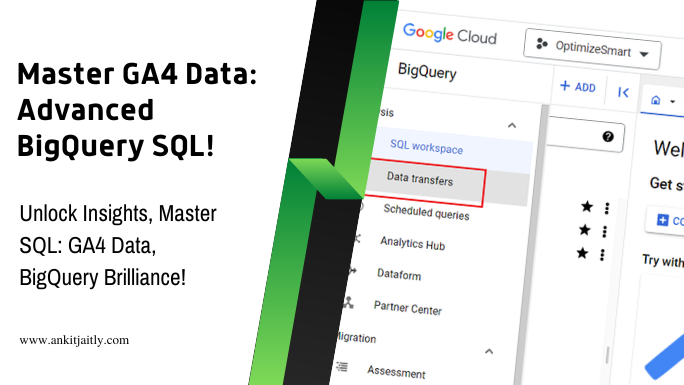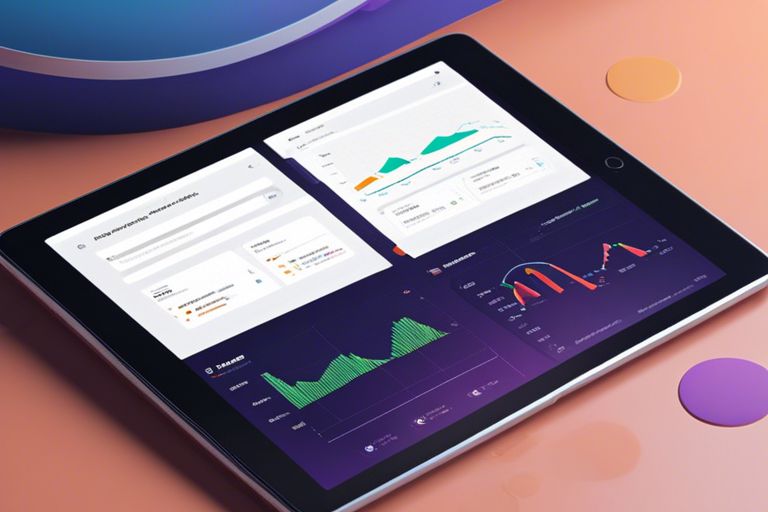Delve into the intricacies of Google Analytics 4 data with these advanced BigQuery SQL techniques. Unlock the power of your data and gain valuable insights by mastering these expert-level SQL techniques for analyzing Google Analytics 4 data. From advanced aggregation methods to complex nested queries, this guide will equip you with the knowledge and skills to dive deep into your GA4 data and extract meaningful insights to drive your business decisions.
Types of Advanced Queries for GA4 Analysis
Your Google Analytics 4 data contains a wealth of information that can be unlocked through advanced SQL queries. By leveraging the power of BigQuery, you can gain deep insights into user behavior, performance metrics, and more. Let’s explore some types of advanced queries for GA4 analysis.
Time-Series Data Analysis Queries
One powerful type of analysis is time-series data analysis, which allows you to track and analyze performance metrics over time. This can be helpful in identifying trends, seasonality, and anomalies in your data. For example, you can use queries to calculate daily, weekly, or monthly aggregates of user engagement metrics such as sessions, screenviews, and events.
SELECT
DATE(event_timestamp) AS date,
COUNT(DISTINCT user_pseudo_id) AS users
FROM
`your_dataset.ga4_events_*`
WHERE
_TABLE_SUFFIX BETWEEN '20220101' AND '20220131'
GROUP BY
date
ORDER BY
date
Funnel Analysis Queries
For a deeper understanding of user behavior and conversion paths, funnel analysis queries can be incredibly valuable. These queries allow you to track the progression of users through predefined steps, such as a conversion funnel. By using queries to calculate conversion rates, drop-off points, and step-to-step retention, you can identify areas for optimization and improvement in your user journey.
WITH funnel_steps AS (
SELECT
user_pseudo_id,
event_name,
event_timestamp
FROM
`your_dataset.ga4_events`
WHERE
event_name IN ('step_1', 'step_2', 'step_3', 'conversion')
)
SELECT
event_name,
COUNT(DISTINCT user_pseudo_id) AS users
FROM
funnel_steps
GROUP BY
event_name
For more advanced funnel analysis, you can create custom segments to analyze specific user groups or behaviors within the funnel, allowing for deeper insights and targeted optimizations.
Cohort Analysis Queries
Queries for cohort analysis enable you to track and compare the behavior of specific groups of users over time. This can be useful for understanding user retention, lifetime value, and the impact of different acquisition channels on user behavior. By grouping users based on their first visit or conversion date, you can analyze how their behavior and engagement metrics evolve over time.
SELECT
FORMAT_DATE('%Y-%m', date),
COUNT(DISTINCT user_pseudo_id) AS new_users
FROM
`your_dataset.ga4_events`
GROUP BY
FORMAT_DATE('%Y-%m', date)
ORDER BY
FORMAT_DATE('%Y-%m', date)
Queries for cohort analysis can reveal valuable insights into user loyalty, repeat purchase behavior, and user engagement patterns based on acquisition cohorts.
Advanced Segmentation Queries
Funnel analysis queries allow you to define custom segments of users based on specific criteria, such as user behavior, demographics, or acquisition channels. This enables you to analyze the behavior and performance of different user segments, uncovering valuable insights into their preferences, actions, and conversion paths.
SELECT
event_name,
traffic_source.source,
COUNT(DISTINCT user_pseudo_id) AS users
FROM
`your_dataset.ga4_events`
WHERE
event_name = 'conversion'
GROUP BY
event_name, traffic_source.source
With advanced segmentation queries, you can gain a deeper understanding of how different user segments interact with your products or services, allowing for more targeted marketing and user experience strategies.
Step-by-Step Guide to Implementing Advanced Techniques
Not the kind of developer to shy away from complex SQL queries? Want to take your Google Analytics 4 data analysis to the next level? Here’s a step-by-step guide to implementing advanced techniques in BigQuery SQL for deep diving into your Google Analytics 4 data.
Structuring Complex Queries for Performance
With the large volume of data generated by Google Analytics 4, it’s essential to structure your queries for optimal performance. Splitting complex queries into smaller, more manageable subqueries can significantly improve query execution times. Use the following approach to structure your complex queries for better performance:
WITH
subquery1 AS (
SELECT
field1,
field2
FROM
table1
),
subquery2 AS (
SELECT
field3,
field4
FROM
table2
)
SELECT
subquery1.field1,
subquery2.field3
FROM
subquery1
JOIN
subquery2
ON
subquery1.field2 = subquery2.field4;
Techniques for Effective Data Joining
An effective data joining strategy is crucial for integrating Google Analytics 4 data with other datasets. Utilize advanced join techniques such as INNER JOIN, OUTER JOIN, and CROSS JOIN to combine data from multiple sources. An effective JOIN strategy is key to extracting meaningful insights from your combined datasets. Here’s an example of using INNER JOIN to join two tables based on a common key:
SELECT
table1.column1,
table2.column2
FROM
table1
INNER JOIN
table2
ON
table1.common_key = table2.common_key;
Any advanced JOIN technique requires a thorough understanding of the data structure and the relationships between different datasets.
Utilizing User-Defined Functions for Custom Analysis
Queries can be further optimized by using user-defined functions (UDFs) to encapsulate complex logic and calculations. UDFs allow for custom analysis and processing of Google Analytics 4 data, enabling you to define and reuse custom functions within your SQL queries. Here’s an example of a simple UDF to calculate the conversion rate:
CREATE FUNCTION
calculate_conversion_rate(conversions INT64, sessions INT64)
RETURNS FLOAT64
LANGUAGE js AS """
return (conversions / sessions) * 100;
""";
Queries utilizing UDFs can provide more concise, reusable, and efficient code for custom analysis and calculations.
Automation Tips for Recurring Queries
Recurring queries can be automated using scheduled queries in BigQuery, streamlining the process of regularly running and analyzing Google Analytics 4 data. After establishing a recurring query, the results can be automatically stored in dedicated reporting tables for easy access and further analysis. Establishing automated recurring queries ensures that relevant data is consistently processed and available for analysis. Consider the following automation tips for recurring queries:
- Parameterizing queries to dynamically adjust query inputs based on predefined conditions
- Optimizing query scheduling to minimize resource contention and maximize query performance
- Implementing error handling mechanisms to manage potential issues during query execution
After implementing automation tips for recurring queries, you can achieve a more efficient and streamlined data analysis process.
Factors to Consider When Deep Diving into GA4 with BigQuery
After setting up Google Analytics 4 (GA4) data in BigQuery, there are several factors to consider when delving deeper into the data using advanced BigQuery SQL techniques. These factors play a critical role in ensuring accurate and insightful analysis of GA4 data.
Understanding Data Granularity and Limits
Granularity and data limits are crucial considerations when working with GA4 data in BigQuery. The granularity of the data determines the level of detail at which the data is stored and can impact query performance and cost. It is essential to understand the data granularity in GA4 to optimize query efficiency and avoid exceeding data limits in BigQuery.
SELECT
event_name,
COUNT(*) AS event_count
FROM
`project_id.dataset_id.events_*`
WHERE
_TABLE_SUFFIX BETWEEN '20220101' AND '20220107'
GROUP BY
event_name;
Handling Data Privacy and GDPR Considerations
The GDPR regulations and data privacy considerations are paramount when working with GA4 data in BigQuery. It is essential to ensure compliance with GDPR guidelines and implement necessary measures to protect the privacy of user data. This includes anonymizing user identifiers and adhering to data retention policies to safeguard sensitive user information.
WITH anonymized_events AS (
SELECT
event_name,
user_pseudo_id,
TIMESTAMP_TRUNC(event_timestamp, HOUR) AS event_hour
FROM
`project_id.dataset_id.events_*`
)
SELECT
event_name,
COUNT(DISTINCT user_pseudo_id) AS unique_users
FROM
anonymized_events
GROUP BY
event_name;
Recognizing the importance of data privacy and GDPR compliance is critical for businesses processing GA4 data in BigQuery, as it ensures ethical and legal usage of customer data.
What Advanced SQL Techniques Can Be Utilized in BigQuery to Analyze Google Analytics 4 Data?
BigQuery and Google Analytics 4 complement each other for advanced SQL techniques. With BigQuery, you can leverage features like nested and repeated fields, as well as machine learning models, to analyze Google Analytics 4 data effectively. This allows for more in-depth and sophisticated data analysis and insights.
Pros and Cons of Advanced BigQuery Techniques in GA4 Analysis
Despite the many benefits of utilizing advanced BigQuery SQL techniques for deep diving into Google Analytics 4 data, there are also some potential pitfalls to be aware of. In this chapter, we will explore the pros and cons of these advanced techniques to help you make informed decisions when analyzing GA4 data.
Pros of Utilizing Advanced SQL Techniques
Any advanced SQL techniques in BigQuery for GA4 analysis offer several advantages. They allow for complex and customized data manipulation, empowering analysts to uncover deeper insights and patterns that may not be readily apparent with standard queries. These techniques also enable the creation of more sophisticated reports and visualizations, providing a comprehensive view of user behavior and performance metrics.
# Example of advanced SQL technique
SELECT
user_id,
event_name,
COUNT(*) AS event_count
FROM
`project_id.dataset_id.ga_sessions_*`,
UNNEST(event_params) AS event
WHERE
event_name = 'user_engagement'
GROUP BY
user_id, event_name
- Complex Data Manipulation: Advanced SQL techniques enable complex data manipulation for uncovering deeper insights.
- Sophisticated Reporting: These techniques allow for the creation of more sophisticated reports and visualizations, providing a comprehensive view of user behavior and performance metrics.
Cons and Potential Pitfalls to Watch For
Any advanced SQL techniques also come with potential pitfalls that analysts should be cautious about. These include increased complexity and potential errors in queries, longer query execution times, and the need for extensive knowledge and expertise to effectively utilize these techniques.
# Example of potential pitfall
SELECT
user_id,
COUNT(DISTINCT event_name) AS unique_events
FROM
`project_id.dataset_id.ga_sessions_*`,
UNNEST(event_params) AS event
WHERE
event_name = 'user_engagement'
GROUP BY
user_id
- Increased Complexity: Advanced SQL techniques can introduce increased complexity and potential errors in queries.
- Longer Query Execution Times: These techniques may lead to longer query execution times, impacting overall analysis speed.
- Extensive Knowledge Required: Effectively utilizing advanced SQL techniques requires extensive knowledge and expertise in data manipulation and query optimization.
The potential pitfalls of utilizing advanced SQL techniques in GA4 analysis should be carefully weighed against the benefits, and analysts should ensure they have the necessary skills and resources to mitigate these challenges effectively.
# More info about potential pitfalls
# Analysts should ensure they have the necessary skills and resources to mitigate these challenges effectively.
Conclusion
With this in mind, it is clear that there are several advanced BigQuery SQL techniques that can be utilized for deep diving into Google Analytics 4 data. By leveraging nested and repeated fields, using window functions for advanced analytics, and employing user-defined functions and scripting for complex data manipulation, analysts and data scientists can extract valuable insights from their Google Analytics 4 data. Additionally, understanding how to optimize queries for performance, utilizing advanced join techniques, and leveraging regular expressions for data extraction can further enhance the depth of analysis. By mastering these advanced techniques, analysts can uncover deeper insights, identify trends, and make data-driven decisions to optimize their digital marketing strategies and business performance.

